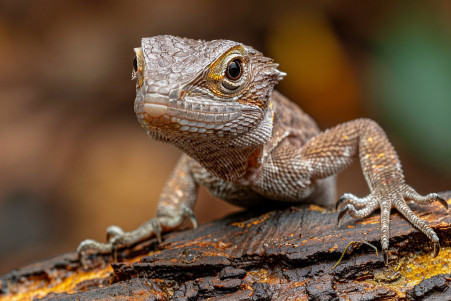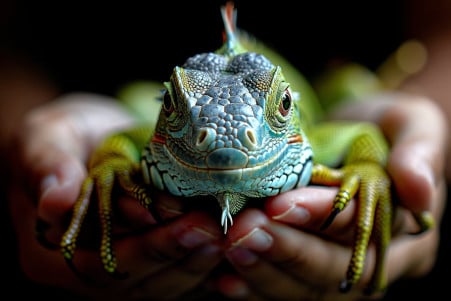Do Stick Bugs Bite? What You Need to Know About These Docile Insects
19 March 2024 • Updated 19 March 2024

Have you ever wondered if the strange-looking stick bugs you see outside are capable of biting you, and if so, how worried you should be? In general, stick insects are not aggressive and do not bite people. Their mouthparts are adapted for eating leaves and other plant material, not for biting or harming larger animals, including humans.
That said, we'll take a look at some interesting findings from entomologists and biology research that will help explain when stick bugs might bite. While it's not something to worry about from a medical standpoint, knowing why they do it and what the potential consequences are can help us better understand these insects and their world, including their defensive behaviors.
Do stick bugs bite?
Defensive Mechanisms: How Stick Insects Protect Themselves
In some stick insect species, the prothoracic glands have evolved to produce noxious chemical sprays that are used to deter predators. According to research by Brutlag et al. referenced in Nature's Poisons, the spray from the southern walkingstick (Anisomorpha buprestoides) contains irritating terpene compounds that can cause severe eye injuries like corneal ulceration in humans and animals if exposed.
The composition and potency of these defensive sprays varies across different stick insect lineages. A study published in BMC Zoology found stick insects possess four distinct types of prothoracic repellent glands—lobe-like, sac-like without ducts, sac-like with ducts, and tube-like. The size and shape of these glands evolved convergently across lineages, likely in response to different predator pressures.
In addition, some species like Megacrania tsudai produce alkaloid compounds like actinidine in their sprays. By examining the diversity of defensive gland anatomy and chemistry, researchers can gain insight into the range of ways stick insects have evolved to protect themselves from predators, as well as the potential dangers of human interactions. Although stick insects are not aggressive, people should be careful when handling species that have evolved chemical defenses.
Walking Sticks in the Ecosystem: Investigating Their Diet and Relationships
Walking sticks are primarily herbivorous and eat a wide range of plants, including leaves, trees, and shrubs. As the National Wildlife Federation explains, their powerful mandibles enable them to eat leaves as their main source of food. This diet is an important part of their relationships with other species and the ecosystem.
The AES Stick Insect Caresheet explains that generalist walking stick species eat plants like brambles, oak, and hawthorn, while more specialized species like the Peruvian Fern Stick Insect eat ferns. Knowing that walking sticks are herbivores and understanding their impact on the plant life they eat can help researchers learn more about their behavior and their place in the ecosystem. BioExpedition points out that walking sticks eat dead leaves, which helps new plants grow and keeps the ecosystem in balance.
Looking at their feeding niches and any symbiotic relationships with host plants can also give scientists more information about walking sticks' potential impact on humans and the environment. For example, as the BioExpedition article explains, in some parts of the U.S., walking sticks have become pests that are damaging oak and hardwood trees. This shows that more research is needed to learn about their diets and their place in the ecosystem.
Stick Bug Taxonomy and Diversity: An Overview of Stick Insect Species and Their Behaviors
The order Phasmatodea, which includes stick insects, is made up of over 3,000 described species in a variety of genera and families, according to a paper in Systematic Entomology. These many species of stick bugs are incredibly diverse, with a wide range of behaviors, adaptations, and evolutionary histories that are shaped by the order’s geographic distribution and ecological diversity.
For example, a survey of Gunung Jerai in Malaysia found 14 species of stick insects from 11 genera in four families, and the most common species at each elevation were different. This shows how different species of stick bugs can occupy different ecological niches and have different ecological roles. By looking at the taxonomy and diversity of stick insects, scientists can learn more about the potential differences in their defensive strategies, diets, and relationships with other organisms.
Meanwhile, other studies, like a phylogenetic analysis of the order Phasmatodea, have shown that the genus Timema diverged from the rest of the Euphasmatodea in the Middle to Late Triassic, more than 200 million years ago. This ancient history of evolution has likely played a role in the many different adaptations and behaviors found in the Phasmatodea order today. By learning more about these individual species and their evolutionary paths, scientists can learn more about the many different stick insect species and their roles in different environments.
Stick Bugs in the Ecosystem: Predator-Prey Dynamics and Ecological Relationships
Stick insects are an important part of the ecosystem, where they are preyed upon by a variety of animals, including birds and mammals. As noted in an article on ScienceDaily, the evolutionary history and defensive adaptations of stick and leaf insects, including their incredible camouflage and chemical defenses, are likely in response to these predatory pressures after the extinction of the dinosaurs 66 million years ago.
Learning about stick bugs' relationships with predators and their place in the ecosystem can help researchers better understand their biology and how they have managed to survive. One investigation in the Journal of Ecology discovered that stick insects have the ability to use ancestral host plants even after they have switched to new ones, indicating that their feeding niches and ecological roles are both complex and flexible.
Researching the symbiotic relationships and larger ecological roles of stick insects can also help scientists learn more about their overall impact on the environment. For example, a study from the National Institutes of Health shows that stick insects like Timema cristinae can have mutualistic relationships with their host plants, where camouflage maladaptation influences the nutritional quality and arthropod communities of the plants they live on. This demonstrates the complex network of ecological relationships that stick bugs are involved in.
Stick Bugs and Human Health: What Are the Risks and Concerns?
Although stick insects are not typically dangerous to humans, some species have evolved defense mechanisms that could be risky. For example, the American Academy of Ophthalmology reports that the two-striped walking stick (Amisomorpha buprestoides) can shoot a noxious spray that causes severe eye pain, conjunctivitis, and even corneal injury in humans.
This study demonstrates that some stick insect species can produce irritating or toxic chemical sprays that can cause problems when they come into contact with humans. Identifying the allergens or irritants in these secretions is important for determining the risks of handling or being around stick bugs.
As a systematic review published in the National Institutes of Health explains, edible insects can cause allergic reactions and cross-reactivity with known allergens, although cooking can help mitigate these issues. Investigating reported instances of human health problems caused by interactions with stick bugs can help researchers and the public understand and take precautions when dealing with these unusual insects.
Although stick insects are not dangerous, their many defense mechanisms mean that people should be aware of and cautious about the potential risks of interacting with certain species. By learning about the factors that may lead to human health problems, we can enjoy the wonder of stick bugs while taking the necessary steps to ensure safe interactions.
Conclusion: What Stick Insects' Non-Threatening Behavior and Ecological Role Mean for Humans
Stick insects are not dangerous and their unique defense mechanisms mean they are not a threat to humans. Their feeding habits, ecological interactions, and evolutionary adaptations help maintain the health of their ecosystems.
Understanding the different species of stick insects and their behaviors can help people learn to appreciate and even admire these interesting insects. At the same time, while it's important to be careful when dealing with or encountering stick insects, it's also important to remember that they are not dangerous.


